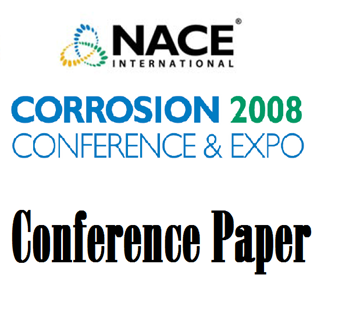Search
96593 OPTIMAL SELECTION OF MATERIALS FOR SEAWATER INJECTION SYSTEMS TESTING IN DEOXYGENATED SEAWATER
Also Purchased
08090 Performance of Selected Corrosion Resistant Alloys Under Simulated Seawater Injection Conditions Downhole
Product Number:
51300-08090-SG
ISBN:
08090 2008 CP
Publication Date:
2008
$20.00
Comprehensive Approach to Oxygen Corrosion Analysis of Water Injection Systems
Product Number:
51315-5962-SG
ISBN:
5962 2015 CP
Publication Date:
2015
$0.00
05106 Materials and Corrosion Challenges with Raw Sea Water Injection
Product Number:
51300-05106-SG
ISBN:
05106 2005 CP
$20.00




